Deformation of the big toe valgus is the most common orthopedic disease.Its main feature is the curvature of 1 Union Plusnephalanx.In the early stages, it manifests itself in the form of a slight increase near the thumb.Pathology has a slow development, so it is quite difficult to diagnose it in the early stages.Valgus deformity is often combined with a violation of blood supply to the tissue, which leads to the development of arthritis or arthrosis.In the absence of treatment in the finger joining, an acute inflammatory process, called bursite, occurs.
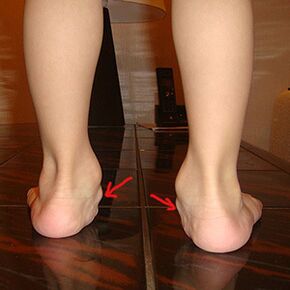
What contributes to the bending of the finger?
The causes of valgus deformation may be different, considered the main among them:
- flat feet;
- Congenital Union Plotnoplange pathology;
- muscle weakness, leading to the pathological movement of bone surfaces;
- foot injuries;
- The destruction of the cartilage against the background of arthritis or arthritis.
Wearing unpleasant shoes to direct reasons for the occurrence of the disease does not apply, but can accelerate the development of the pathological process.Therefore, Khalus Valgus is most commonly found in women.There are other pathological reasons why the first finger of the foot can bend.Osteoporosis develops when calcium flow from bone tissue, due to which they become less dense.This is what leads to a change in the form of union.Almost every person who has valgus deformity symptoms have one of the 2 types of flat feet.Disordishes endocrine disorders contribute to a decrease in ligament strength, which is why they cannot keep the node in the right position.The risk group includes women who are accustomed to walking with high head shoes.Providing increased loads on the fingers accelerates the curvature process of the joint.Ballet dancers are forced to stay in socks for a long time, which can lead to toe deformity.So Valgus deformity is found in only 3% of people under the age of 30, while among the elderly every 5 people have a similar problem.This disease is most often found in patients whose parents had pathology of the muscular system.
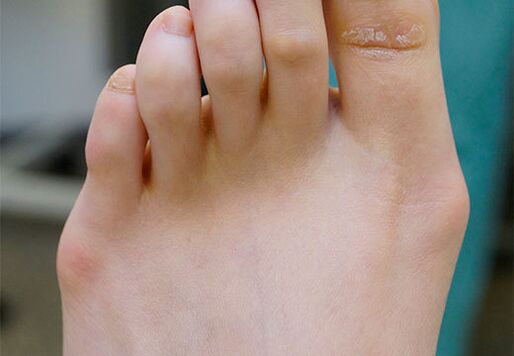
Clinical picture of the disease
Bending the toe in the early stages is quite difficult to observe.One person notes that he becomes uncomfortable to walk in the usual shoes.After a long stand in the standing position, pain syndrome occurs.Over time, the main sign of pathology appears - the deviation of the first joint of metatarsophalangeal to the second with the formation of the so -called cone.The rest of the fingers take the shape of a hammer.The patient may suffer chronic fatigue and difficulty choosing shoes.Over time, the corn appears on the skin of the feet, bringing a lot of concern to a person.The most common signs of valgus deformation are painful sensations associated with the inflammation of the synovial membrane.A soft seal appears on the first finger.The skin of the affected area reds and swells.Over time, bone corn, soft irritant and cartilage is formed.Severe pains appear while walking.The motility of the joint is limited, the pathological process can cover all of the toes.
Some degrees of valgus deformation are distinguished, each of which has its own symptoms:
- Hallux valgus of scale 1 is characterized by the bending of the finger no more than 20 °.No pain at the same time.
- In the case of 2 degree disease, the joint is displaced by 21-30 °.Unpleasant sensations are soft in nature, finger mobility does not disturb.
- By deforming the 3th degree valgus, the bending angle exceeds 30 °.Pain in the affected area acquires a constant character.They prevent a person from wearing popular shoes, walk and play sports.
- In 4 stages of the disease, the joint is moved by more than 50 °.The deformation of this scale is characterized by severe pain, difficulty with choosing shoes, forming a corn.
How this disease is detected
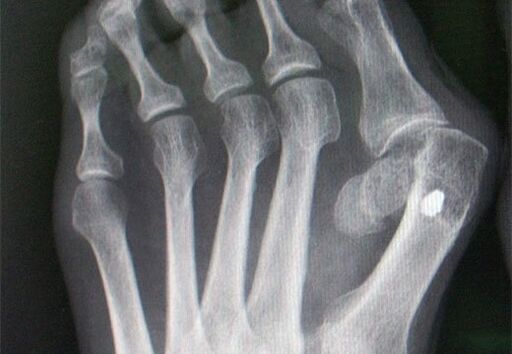
To make a preliminary diagnosis, an examination of the foot and a history of anamnesis is performed.The doctor should:
- Appreciate the severity of the walk change;
- The degree of curvature of the union;
- the presence of corn;
- bone cones.
Main therapeutic measures
The choice of a particular methodology depends on the degree of deformation of the joint and the severity of the pain syndrome.The most effective treatment of deformation of the big toe valgus is in its early stages.Therapy can be both conservative and surgical.Moreover, the development of orthopedic shoes, which contributes to the correct distribution of the load and prevents the appearance of corn,Helps suspend the development of the pathological process.To reduce the pressure in the affected area, specialize and gaskets.Due to the large number of side effects, these funds are not suitable for prolonged use.Drug therapy cannot completely save a person from valgus deformation.With its help, you can only eliminate the pain and signs of inflammation.For the treatment of the disease, physiotherapeutic procedures are often used - diaatermy or ultrasound.However, these methods only bring about temporary relief.The most effective is the use of orthopedic devices made taking into account the individual characteristics of the foot.The use of supports and fingers in the early stages of the disease prevents further deformation of the joints.With advanced forms of the disease, orthopedic devices allow you to make the walk more comfortable.With the help of special bedding, you can eliminate the main cause of bending - flat feet.Surgery is usually required for 3-4 degrees of valgus deformation when conservative treatment is ineffective.The choice of method depends on the degree of the severity of the deformation.With a slight finger displacement, only bone growth is removed.To do this, a small cut in the affected area is made, after which the lump is cut and removed.
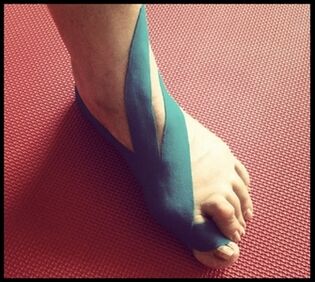
Distal osteotomy is aimed at reducing the bending angle.The bottom of the bone is dissected and installed in the right position.Proximal osteotomy means the effect on the upper part of the finger.During the operation of Keller brands, the finger joint is completely removed, the remaining synovial shell is placed between the bone Plus and the main phalanx.Surgical interventions are used in most cases of advanced forms of valgus deformation.The effectiveness of treatment depends largely on the correctness of implementing the rehabilitation measures.In post -operative period, it is necessary to wear solid shoes or use special accessories.To reduce the load on the operated leg, you should use crutches.Shoes should have a wide toe and low heel.It should be remembered that any surgical intervention can lead to the development of complications.
The most dangerous are:
- soft tissue infection;
- osteomyelitis;
- bleeding;
- displacement of bone fragments;
- slowing the healing processes;
- Loss of finger sensitivity.
The rarer complications are avascular neurosis and post -traumatic arthritis.Preventing valgus deformation is a continuous visit to an orthopedic.Wear high -heeled shoes should be rejected.The use of orthopedic beds is recommended.Long stay in a standing position is forbidden.Valgus deformity is a very serious disease that can worsen the quality of life of the patient, so treatment should begin in its early stages.
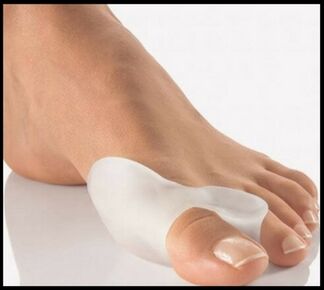
Khalus valgus (Hallux valgus) treatment without surgery
Excessive body weight, wearing unpleasant shoes, trauma of the legs leads to the appearance from the inside to the base of the thumb of the painful, hyperemic prolongation.It's called - Hallux valgus.What is Hallux valgus?The term defined literally is deciphered as follows: Hallux is a big finger, and valgus is curvature.The formed postrusion is the medial part of the head of the first metatarsal bone.At the same time, it gradually departs from other metatarsal bones, which visually increases the size in size.This disease is manifested by severe pain, it becomes impossible to wear ordinary shoes.The skin above the extension is constantly rubbed, inflamed, in rare cases that they flow blood.With the premature circulation of medical assistance, an important deformation of all metatarsophalangeal joints occurs.The first and second finger is crossed, the other fingers can bend involuntarily, while stretching becomes impossible.
Causes of the disease
To better understand what Valgus Khalus is, you need to know the causes and mechanism of the occurrence of this disease.It develops more often in women, as their ligamentous apparatus is not as strong as in men.Such deformity does not develop independently, the effect of the following pathogenic factors is needed for its manifestation:
- Increased body weight - in fatty people, there is an increase in load in the area of nodes plusno -flanning, which leads to the extension of the ligamentous apparatus, which connects metatarsal bones;
- Narrow, unpleasant, pressing, on high heels, shoes are the main stimulation of this condition.Frequent coating of shoes with a tight toe, also on high heels, contributes to a constant change in the physiological position of the thumb, which is why it gradually deviates;
- Changes in the hormonal background, which often occur in people of straight sex, contribute to a change in metabolism and trophism of connective tissue, which leads to increased tendon extension, damaged their integrity;
- Traumatization - significant damage to muscle tendons that perform the main and deviant functions provoke the predominance of one of them, which is the cause of the deviation of the first metatarsal bone;
- Diabetes mellitus - leads to the development of the diabetic leg, which is characterized by damaged blood circulation and trophism of muscles, tendons and ligaments, which makes it possible to appear in deformities;
- Arthritis and arthritis of the big toe can lead to the development of a chronic inflammatory focus, these diseases also stimulate the process of increasing osteophytes that can provoke deformation of the affected joint;
- Pregnancy is a period in a woman's life, when complete hormonal restructuring occurs, and an abdominal growth transfers the load to the anterior parts of the legs, which provokes the development of khalus valgus.
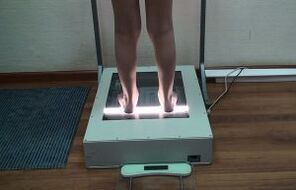
Hallux valgus stages
The degree of gravity of Khalus valgus is determined at the base of the angle between the first metatarsal bone and the second, as well as the angle of deviation of the thumb from the first metatarsal bone.There are three stages of development of this disease:
- Hallux valgus of scale 1 is characterized by minimal deviations that make up: the angle of less than 12 degrees, and the deviation of the thumb does not exceed 25 degrees.At the same time, patients may not completely miss the pathognomonic symptoms, and the visual changes are almost invisible.
- Khalus valgus 2 degrees - manifested by an increase in the corner of 18 degrees, at this time the first finger is rejected more than 25 degrees.With this development of deformity, painful sensations appear, discomfort when wearing ordinary shoes.With excessive physical overload, the pain intensifies.The convex part of the bone head plus is constantly rubbed, hyperemic, swollen, which indicates an inflammatory process.
- Hallux valgus 3 degrees is manifested by significant bending, the angle between the metatarsal bones exceeds 18 degrees, and the first and second fingers cross.A considerable bounce of red is observed in the interior, painful in palpation.Wearing shoes becomes impossible due to pain, patients constantly lame, saving the affected limb.
Treatment tactics depend on the neglect of the pathological process.In the early stages, you can do with conservative methods using tires and other fixed devices.The following stage requires an emergency operation, without which the foot can deform, other undesirable complications will occur.
Halus Valgus Treatment Methods
Before starting treatment, it is necessary to exclude the impact of pathological factors.First of all, you need to reduce body weight.For this, patients are recommended to play sports, lead an active lifestyle.An important point is that when performing physical exercises, it is forbidden to apply forces on the affected limb.The appointment of diet therapy is an important step in the treatment of Khalus Valgus.A specialist may recommend an effective diet, but must necessarily include products rich in vitamins and minerals that will help improve the condition of the affected joint.
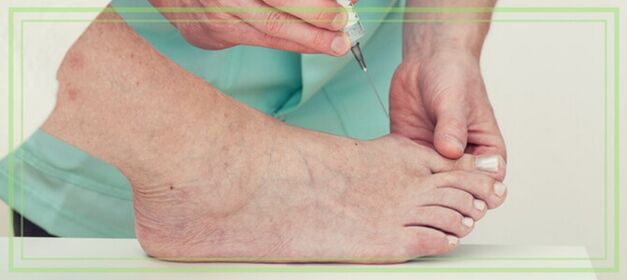
Tires and orthopedic fixes
They are used for continuous deformed fixation plus bone and finger closer to the rest of the foot.You can use solid locks - tires that, when fixed on the foot, do not make it possible to move the finger.Such a device is used during sleep as well as with a long break.You can turn to the use of silicon fixes.There are silicone fixatives that are attached only to the thumb as well as attaching all fingers.The main advantage of this development is the ability to walk in the shoes in it.At the same time, effective bone plus fixation continues, and the latches themselves do not feel practically not felt when dressing.























